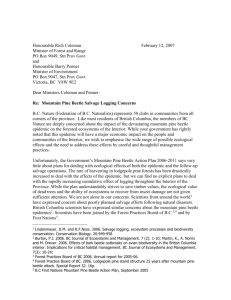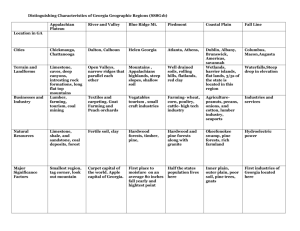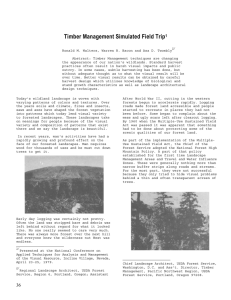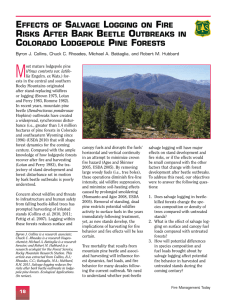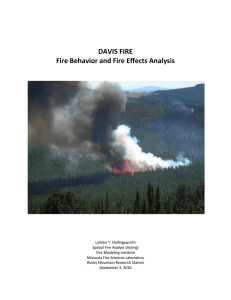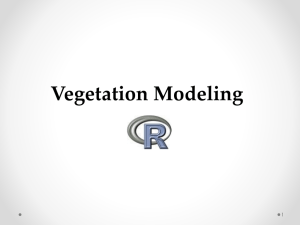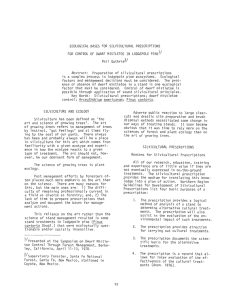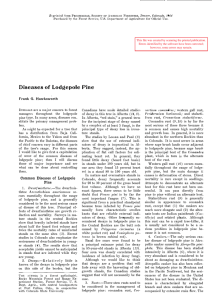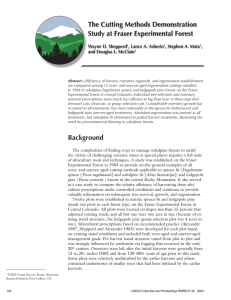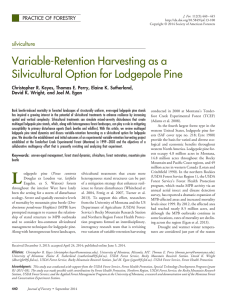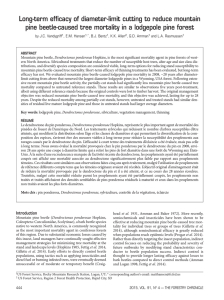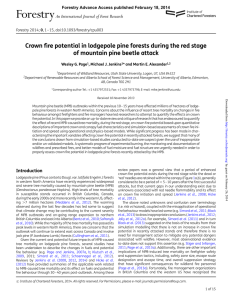Science
advertisement
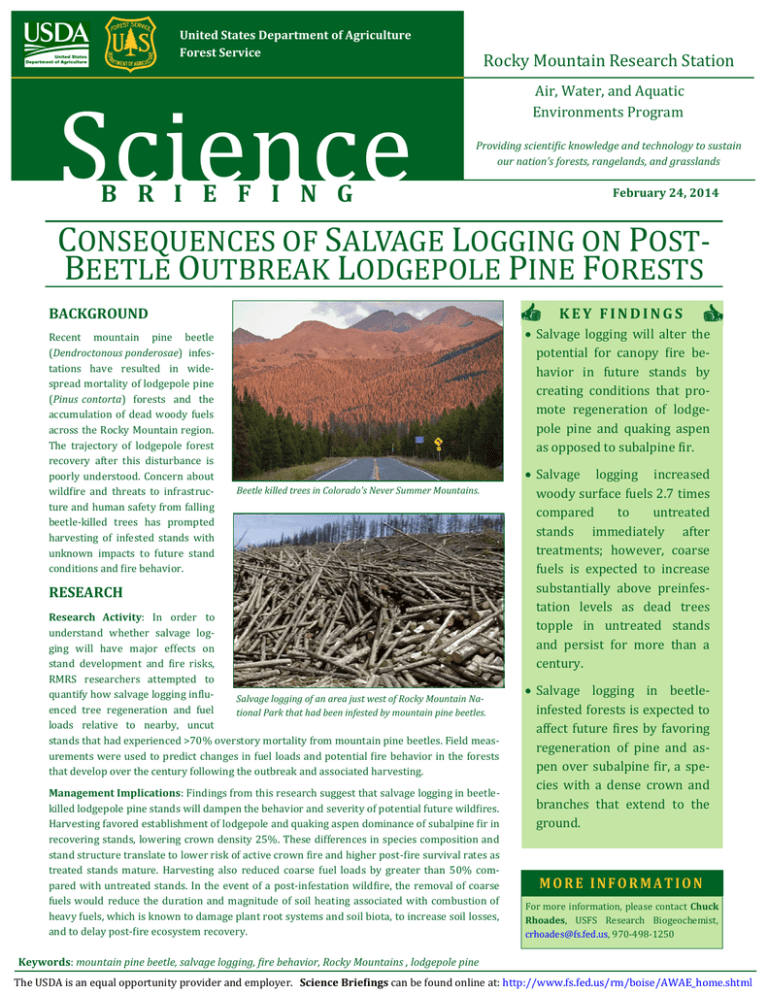
United States Department of Agriculture Forest Service Science Rocky Mountain Research Station Air, Water, and Aquatic Environments Program Providing scientific knowledge and technology to sustain our nation’s forests, rangelands, and grasslands B R I E F I N G February 24, 2014 CONSEQUENCES OF SALVAGE LOGGING ON POSTBEETLE OUTBREAK LODGEPOLE PINE FORESTS BACKGROUND Recent mountain pine beetle (Dendroctonous ponderosae) infestations have resulted in widespread mortality of lodgepole pine (Pinus contorta) forests and the accumulation of dead woody fuels across the Rocky Mountain region. The trajectory of lodgepole forest recovery after this disturbance is poorly understood. Concern about wildfire and threats to infrastructure and human safety from falling beetle-killed trees has prompted harvesting of infested stands with unknown impacts to future stand conditions and fire behavior. KEY FINDINGS Salvage logging will alter the potential for canopy fire behavior in future stands by creating conditions that promote regeneration of lodgepole pine and quaking aspen as opposed to subalpine fir. Beetle killed trees in Colorado's Never Summer Mountains. RESEARCH Research Activity: In order to understand whether salvage logging will have major effects on stand development and fire risks, RMRS researchers attempted to quantify how salvage logging influSalvage logging of an area just west of Rocky Mountain Naenced tree regeneration and fuel tional Park that had been infested by mountain pine beetles. loads relative to nearby, uncut stands that had experienced >70% overstory mortality from mountain pine beetles. Field measurements were used to predict changes in fuel loads and potential fire behavior in the forests that develop over the century following the outbreak and associated harvesting. Management Implications: Findings from this research suggest that salvage logging in beetlekilled lodgepole pine stands will dampen the behavior and severity of potential future wildfires. Harvesting favored establishment of lodgepole and quaking aspen dominance of subalpine fir in recovering stands, lowering crown density 25%. These differences in species composition and stand structure translate to lower risk of active crown fire and higher post-fire survival rates as treated stands mature. Harvesting also reduced coarse fuel loads by greater than 50% compared with untreated stands. In the event of a post-infestation wildfire, the removal of coarse fuels would reduce the duration and magnitude of soil heating associated with combustion of heavy fuels, which is known to damage plant root systems and soil biota, to increase soil losses, and to delay post-fire ecosystem recovery. Salvage logging increased woody surface fuels 2.7 times compared to untreated stands immediately after treatments; however, coarse fuels is expected to increase substantially above preinfestation levels as dead trees topple in untreated stands and persist for more than a century. Salvage logging in beetleinfested forests is expected to affect future fires by favoring regeneration of pine and aspen over subalpine fir, a species with a dense crown and branches that extend to the ground. MORE INFORMATION For more information, please contact Chuck Rhoades, USFS Research Biogeochemist, crhoades@fs.fed.us, 970-498-1250 Keywords: mountain pine beetle, salvage logging, fire behavior, Rocky Mountains , lodgepole pine The USDA is an equal opportunity provider and employer. Science Briefings can be found online at: http://www.fs.fed.us/rm/boise/AWAE_home.shtml

